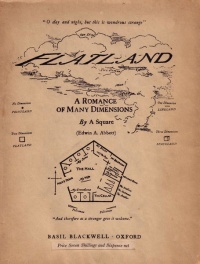Shape
From The Art and Popular Culture Encyclopedia
| Revision as of 08:30, 15 December 2012 Jahsonic (Talk | contribs) ← Previous diff |
Revision as of 08:48, 15 December 2012 Jahsonic (Talk | contribs) Next diff → |
||
| Line 19: | Line 19: | ||
| *[[Human form]] | *[[Human form]] | ||
| *[[Biomorphism]] | *[[Biomorphism]] | ||
| - | + | ==Namesakes== | |
| + | *''[[The Shape of Things to Come]]'' | ||
| {{GFDL}} | {{GFDL}} | ||
Revision as of 08:48, 15 December 2012

|
Related e |
|
Featured: |
The shape (from Old English: created thing) of an object located in some space is a geometrical description of the part of that space occupied by the object, as determined by its external boundary – abstracting from location and orientation in space, size, and other properties such as colour, content, and material composition.
Simple shapes can be described by basic geometry objects such as a set of two or more points, a line, a curve, a plane, a plane figure (e.g. square or circle), or a solid figure (e.g. cube or sphere). Most shapes occurring in the physical world are complex. Some, such as plant structures and coastlines, may be so arbitrary as to defy traditional mathematical description – in which case they may be analyzed by differential geometry, or as fractals.
Shape
- as an element in art
Shape pertains to the use of areas in two dimensional space that can be defined by edges, setting one flat specific space apart from another. Shapes can be geometric (e.g.: square, circle, triangle, hexagon, etc.) or organic (such as the shape of a puddle, blob, leaf, boomerang, etc.) in nature. Shapes are defined by other elements of art: space, line, texture, value, color, form.
See also
- Bouba/kiki effect
- Glossary of shapes with metaphorical names
- Icosidodecahedron by Leonardo da Vinci
- Patterns in nature
- Shapeless
- Human form
- Biomorphism
Namesakes
_-_Odilon_Redon.jpg)

